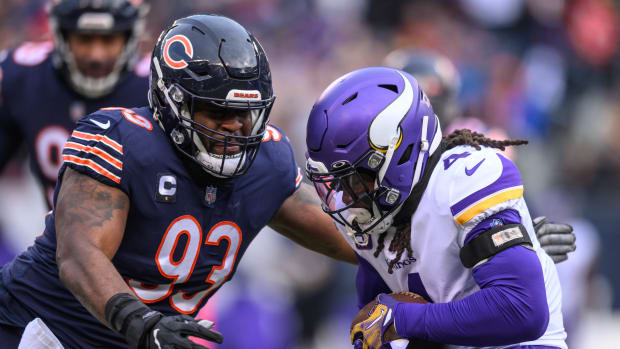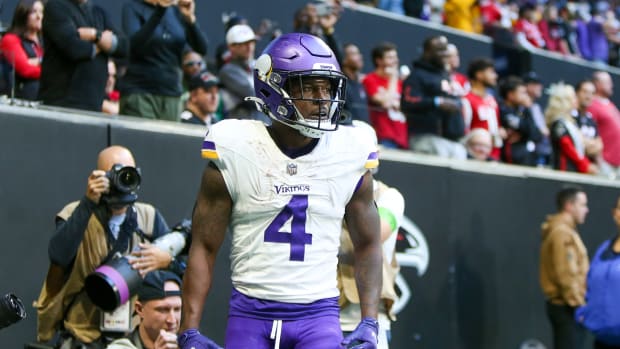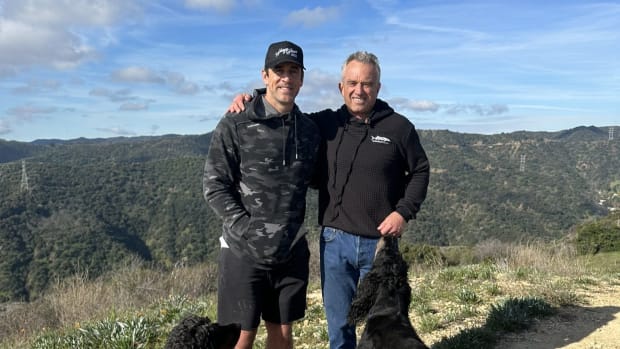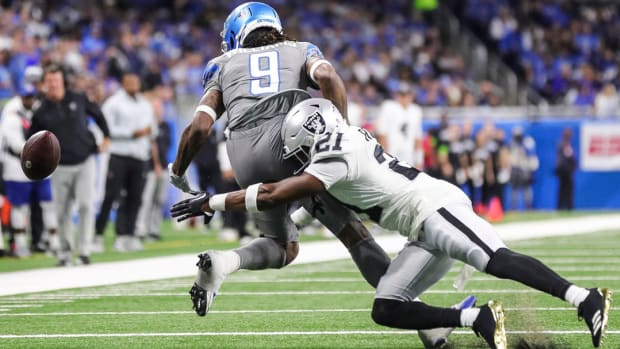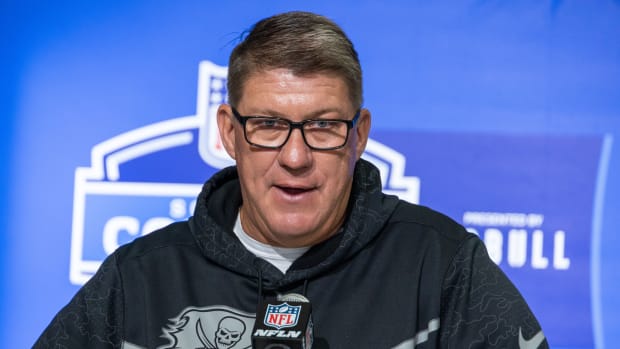Legal takeaways from Brady-Goodell Deflategate federal court hearing
If the first courtroom hearing in Tom Brady’s litigation with the NFL is any indication of where the proceedings are headed, don’t expect a settlement any time soon. The two sides seem prepared for a legal battle that could last into September or even beyond. While most of Wednesday’s proceedings occurred in private, U.S. District Judge Richard Berman allowed media—including court reporter Stephen Brown and his outstanding live tweeting—to hear some of the discussion between the judge and NFL attorney Daniel Nash and NFLPA attorney Jeffrey Kessler through a closed-circuit feed.
Here are my five legal takeaways:
1. Judge Berman seemed very skeptical of the NFL’s core allegation that Brady participated in an alleged ball deflation scheme.
The legal question in Brady’s case is not whether Brady “did it.” It’s whether the NFL lawfully applied Article 46 of the collective bargaining agreement in investigating and punishing Brady. Yet on Wednesday Judge Berman appeared unexpectedly interested in whether, in fact, Brady “did it.”
No settlement reached between Brady, Goodell in Deflategate hearing
Most tellingly, Judge Berman pressed Nash, the NFL’s attorney, for reference to actual evidence that Brady participated in a ball deflation scheme. Judge Berman also signaled skepticism in the NFL’s factual case by highlighting that Brady played better with over-inflated footballs than with under-inflated ones. In response to this line of questioning, Nash conceded that no direct evidence of Brady’s involvement in a ball deflation scheme or conspiracy exists. He further granted that the NFL possesses no texts or other forms of evidence that directly prove Brady’s involvement. Nash, however, insisted that the absence of direct evidence does not clear Brady nor does it mean that the league wrongfully applied the collective bargaining agreement.
• Manning: Brady apologized for email remarks revealed during Deflategate
Brady and the NFLPA hope that Judge Berman finds the NFL’s case against Brady so devoid of evidence that the judge can’t bring himself to conclude that the NFL lawfully punished him. While there is always risk in predicting how a judge will rule based on a judge’s line of questioning, Judge Berman’s noticeable skepticism of the NFL’s alleged facts is clearly an encouraging sign for the Brady camp. Attorney Alan Milstein, who has litigated against the NFL and tried cases before Judge Berman, told SI.com Wednesday night: “After what we heard today, I think Judge Berman will absolutely vacate Brady's suspension.”
2. Jeffrey Kessler admitted that one version of Deflategate could have occurred.
It’s worth remembering that Kessler’s role is not to disprove the NFL’s allegation that the New England Patriots orchestrated a scheme to use slightly-underinflated footballs in the 2015 AFC Championship Game. Kessler’s job is to disprove that Brady had any involvement with a scheme.
Takeaways from legal briefs filed by NFL, NFLPA over Brady's suspension
This dynamic was apparent when Kessler conceded the possibility of Patriots equipment assistants Jim McNally and John Jastremski deflating footballs in hopes of helping Brady. Recall that in his NFL appeal testimony, Brady noted that he prefers that footballs be on the lower end of the NFL’s allowable scale of 12.5 to 13.5 PSI. Kessler—undoubtedly with his clients, the NFLPA and Brady, in mind—stressed that even if McNally and Jastremski undertook a ball deflation scheme, they would not have done so under Brady’s direction. Further, Kessler stressed, no evidence shows any involvement by Brady. Reading between the lines, Kessler seemed to allow for the possibility that McNally and Jastremski might have overzealously tried to implement Brady’s instruction that the footballs be closer to 12.5 than 13.5 PSI. If that scenario took place, Brady would not be at fault. But McNally and Jastremski would be.
By conceding that a ball deflation scheme might have occurred, Kessler wants Judge Berman to focus not on the broader controversy of Deflategate but on the absence of evidence linking Brady to it. As a result, do not expect Kessler to expend much time highlighting the multiple scientific reports that contend that if the Patriots’ footballs were slightly under-inflated in the AFC Championship Game, it was due to Ideal Gas Law and atmospheric conditions rather than to subterfuge and deception. Kessler’s job is not to help out the Patriots. It is to ensure that Brady prevails in court.
3. Daniel Nash reminded Judge Berman that he should defer to Goodell.
It may seem odd to hear an attorney tell a judge, in so many words, that the judge must accept the attorney’s position, but NFL attorney Nash adopted such an approach today. Nash reiterated to Judge Berman the NFL’s core legal argument that under federal law, courts are expected to accord high deference to arbitrators. There is no debate that Goodell was acting in the capacity of an arbitrator when he upheld Brady’s four-game suspension.
What Tom Brady's denial of wrongdoing means for NFL, NFLPA
Nash also wants Judge Berman to recognize the power of Article 46. It grants Goodell ultimate authority to conclude what constitutes “conduct detrimental to the integrity of, or public confidence in, the game of professional football,” whether such conduct warrants a punishment and, if so, whether the punishment should be a fine or suspension. In other words, even if Judge Berman concludes that Brady should have only been fined, Goodell, according to Nash, had the legal right to suspend him.
Nash raised these arguments after likely sensing Judge Berman’s skepticism about the NFL’s facts. Judge Berman may have also given Nash reason to worry when he questioned—as many have—what the Wells Report meant by Brady being “generally aware” of a ball deflation scheme. From Nash’s perspective, however, these worries are irrelevant. Goodell, as Nash asserted, was granted almost unlimited authority by the NFLPA to exercise judgment in player conduct matters. Nash even highlighted Goodell suspending Ray Rice as an example of his authority (even though Rice’s suspension was later thrown out by former U.S. District Judge Barbara Jones on grounds Rice had been double punished).
• MMQB: BRANDT: Thoughts on court proceedings and what comes next
In short, Nash wants Judge Berman to focus not on what may be a weak case against Brady, but on the legal right of the NFL to punish Brady even in a weak case.
4. NFL might regret its preemptive lawsuit in New York.
Both the NFLPA and NFL clearly engaged in “forum shopping” when they sought federal court intervention on Goodell upholding Brady’s four-game suspension. The NFLPA filed in the U.S. District Court for the District of Minnesota in hopes that the case would be assigned to U.S. District Judge David Doty. Judge Doty is considered player-friendly and recently ruled against the NFL in the Adrian Peterson case. Like a smart defensive coordinator, the NFL anticipated the NFLPA’s move by filing a lawsuit in the U.S. District Court for the Southern District of New York before the NFLPA could file in Minnesota. By filing first in New York, the NFL made it much more likely the litigation would be heard in New York rather than Minnesota.
• Transcript shows Brady denied ever deflating footballs
Initially, the NFL’s legal strategy seemed astute and one step ahead of the NFLPA. But as the litigation has played out, the NFL’s first filing may have backfired. First, Judge Doty was not assigned the case. Instead it was assigned to U.S. District Judge Richard Kyle. Second, early indications suggest that Judge Berman is far from an ideal judge for the NFL. Last week Judge Berman ordered the release of Brady’s transcript in spite of the NFL’s request that it be kept confidential, and today he expressed significant doubt in the factual narrative offered by the league.
5. Jeffrey Kessler may have opened the door for a settlement—and the NFL might be wise to walk through it.
As I wrote in an SI.com article published on Tuesday, both Brady and the NFL have many reasons not to settle. Judge Berman, however, seems adamant that the two sides find common ground. The parties seem to understand the message. In response to Judge Berman’s implicit critique of Brady not sharing all electronic evidence with attorney Ted Wells, Kessler acknowledged that Brady could have acted differently. Keep in mind, Kessler is not known for making acknowledgments that raise questions about his clients. Kessler’s willingness to do so today was likely with at least two strategic goals in mind.
For one, Kessler’s concession makes him appear reasonable, which likely plays well with Judge Berman. The judge has repeatedly stressed that both parties have an obligation to engage in good faith settlement talks, and good faith implies both sides act reasonably in making demands.
NFL player survey: Patriots deflated footballs but are not cheaters
Second, Kessler may be signaling to the NFL that if the league offers a settlement where Brady would receive a reduced punishment, Brady might be willing to admit that he could have been more cooperative. This admission would be far different from Brady accepting the conclusions of the Wells Report. Brady, who testified under oath that those conclusions were wrong, would risk potential perjury criminal charges if he now admits that Wells was correct. An admission by Brady that he “could have been more cooperative,” in contrast, would not carry any legal risk. Such an admission would also be fairly insignificant when compared to an admission of cheating.
Nash and the NFL legal team are likely also thinking about ways to settle with Brady. With that in mind, Judge Berman’s focus on the absence of direct evidence implicating Brady likely came as both a surprise and disappointment to the NFL. The NFL believes that if Judge Berman focuses on process, the league should win the case. Whether that assertion is true is debatable—the NFLPA has offered a number of persuasive arguments that the NFL’s application of the CBA to Brady was flawed—but clearly the NFL is on stronger legal footing if Judge Berman focuses on process rather than facts. For that reason, Judge Berman asking multiple questions to Nash about the NFL’s evidence linking Brady to an alleged ball deflation scheme was not a favorable development for the league. While it’s possible that Judge Berman could rule for the NFL even if he doesn’t believe Brady partook in an alleged ball deflation scheme, he might reluctant to do so.
Along those lines, the worst-case scenario for the NFL would be to lose to Brady. The league would lose its most significant legal challenge while under the leadership of Roger Goodell, and other players would have greater incentive to sue whenever they are suspended. While we don’t know the terms of the NFL’s best settlement offer to Brady to date, those terms obviously haven’t convinced Brady to say “yes.” If the league is now more concerned about losing to Brady, it stands to reason the league might offer Brady better terms.
Michael McCann is a Massachusetts attorney and the founding director of the Sports and Entertainment Law Institute at the University of New Hampshire School of Law. In the fall 2015 semester, he will teach an undergraduate course at UNH titled “Deflategate.” McCann is also the distinguished visiting Hall of Fame Professor of Law at Mississippi College School of Law.
































